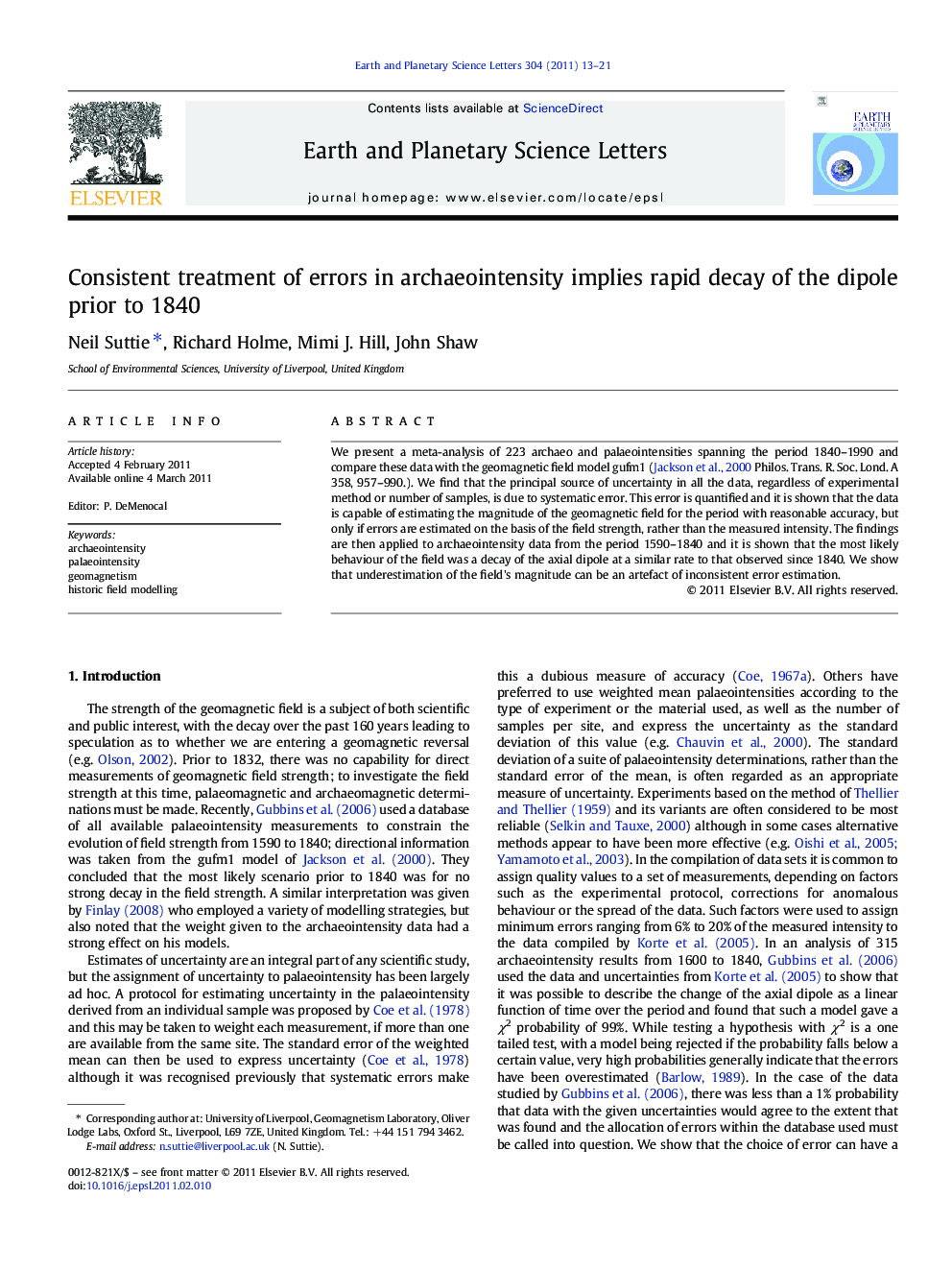| Article ID | Journal | Published Year | Pages | File Type |
|---|---|---|---|---|
| 4678191 | Earth and Planetary Science Letters | 2011 | 9 Pages |
We present a meta-analysis of 223 archaeo and palaeointensities spanning the period 1840–1990 and compare these data with the geomagnetic field model gufm1 (Jackson et al., 2000 Philos. Trans. R. Soc. Lond. A 358, 957–990.). We find that the principal source of uncertainty in all the data, regardless of experimental method or number of samples, is due to systematic error. This error is quantified and it is shown that the data is capable of estimating the magnitude of the geomagnetic field for the period with reasonable accuracy, but only if errors are estimated on the basis of the field strength, rather than the measured intensity. The findings are then applied to archaeointensity data from the period 1590–1840 and it is shown that the most likely behaviour of the field was a decay of the axial dipole at a similar rate to that observed since 1840. We show that underestimation of the field's magnitude can be an artefact of inconsistent error estimation.
Research Highlights► Error estimation is crucial to geomagnetic field modelling. ► Predictive power of palaeointensity is demonstrated. ► New proposed decay of the dipole prior to 1840. ► Meta-analysis is used to quantify systematic errors in archaeointensity.
